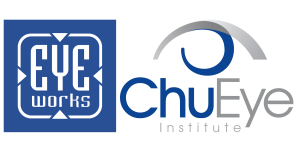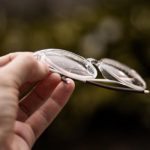LASIK has become a common household term, especially among people who are considering laser eye surgery for vision correction. But iLASIK is not as familiar a name. What is this modern method of laser vision correction? What are the differences between LASIK versus iLASIK?
Just as all technology has advanced significantly in recent years, so has LASIK. As eye surgeons become trained in the latest cutting-edge techniques, they can offer a wider range of safe and efficient procedures. At Eyeworks, our eye surgeons use state-of-the-art technologies to perform various types of laser eye surgeries in our eye care centers in Ft. Worth, Southlake, and Downtown.
Our eye doctor explains the basic differences between LASIK and iLASIK:
LASIK
LASIK Surgery is one type of refractive surgery that works to improve nearsightedness, farsightedness, and astigmatism. During this surgery, the surgeon creates a thin flap in the cornea and folds it back, enabling access to the cornea so it can be reshaped to correct the vision problems. To make the flap, a microkeratome blade is used to slice a thin layer of the cornea. Afterwards, an excimer laser is used to remove and sculpt the cornea before the flap is returned to its original position, where it heals.
iLASIK
iLASIK is a customized, bladeless method of refractive surgery, meaning that every procedure considers the unique microscopic differences of each eye and no blades are used.
The first step of iLASIK is to create a 3D map of the eye, which uses wavefront-guided eye-mapping to identify the problems and imperfections. The imaging is painless and enables the surgeon to perform a custom-fit procedure.
In the second part of this procedure, a femtosecond laser (with high frequency pulses of laser light) is used to create the corneal flap. Then, the cornea is reshaped with a guided excimer laser. The flap is then folded back into place to heal.
iLASIK versus LASIK – A Review of the Differences
- Bladed vs. blade-free: although there are inherent risks involved with both LASIK and iLASIK, the incidence of complications is higher with LASIK. Primarily, this is due to problems with the flap because of the way it was cut with a blade. iLASIK is entirely bladeless.
- Custom-designed procedure: iLASIK accounts for the fact that every eye is distinct and may need a different corrective approach. The 3D tracking used with iLASIK leads to a more precisely-made corneal flap that matches your eyeball’s characteristics and dimensions.
- Visual outcome: the wavefront mapping done with iLASIK helps to provide your eye surgeon with highly specific, personalized recommendations that can lead to more accurate visual results.
Which is right for your eyes – iLASIK or LASIK?
Both of these types of laser eye surgery are regarded to be safe and effective. To decide which method is right for you, you need to consult with our eye doctors in Ft. Worth, Southlake, and Downtown. After a comprehensive eye exam and evaluation of your ocular condition, we will explain both procedures to you and made an individualized recommendation.
Ophthalmologists are continually exploring ways to improve laser eye surgery outcomes. Contact our experts at Eyeworks to book an eye exam and learn all about the latest vision correction procedures and which one is a good match for you.
At Eyeworks, we put your family's needs first. Talk to us about how we can help you maintain healthy vision. Call us today: 817-346-7077 or book an appointment online to see one of our Ft. Worth eye doctors.
Want to Learn More? Read on!
FOLLOW US:








